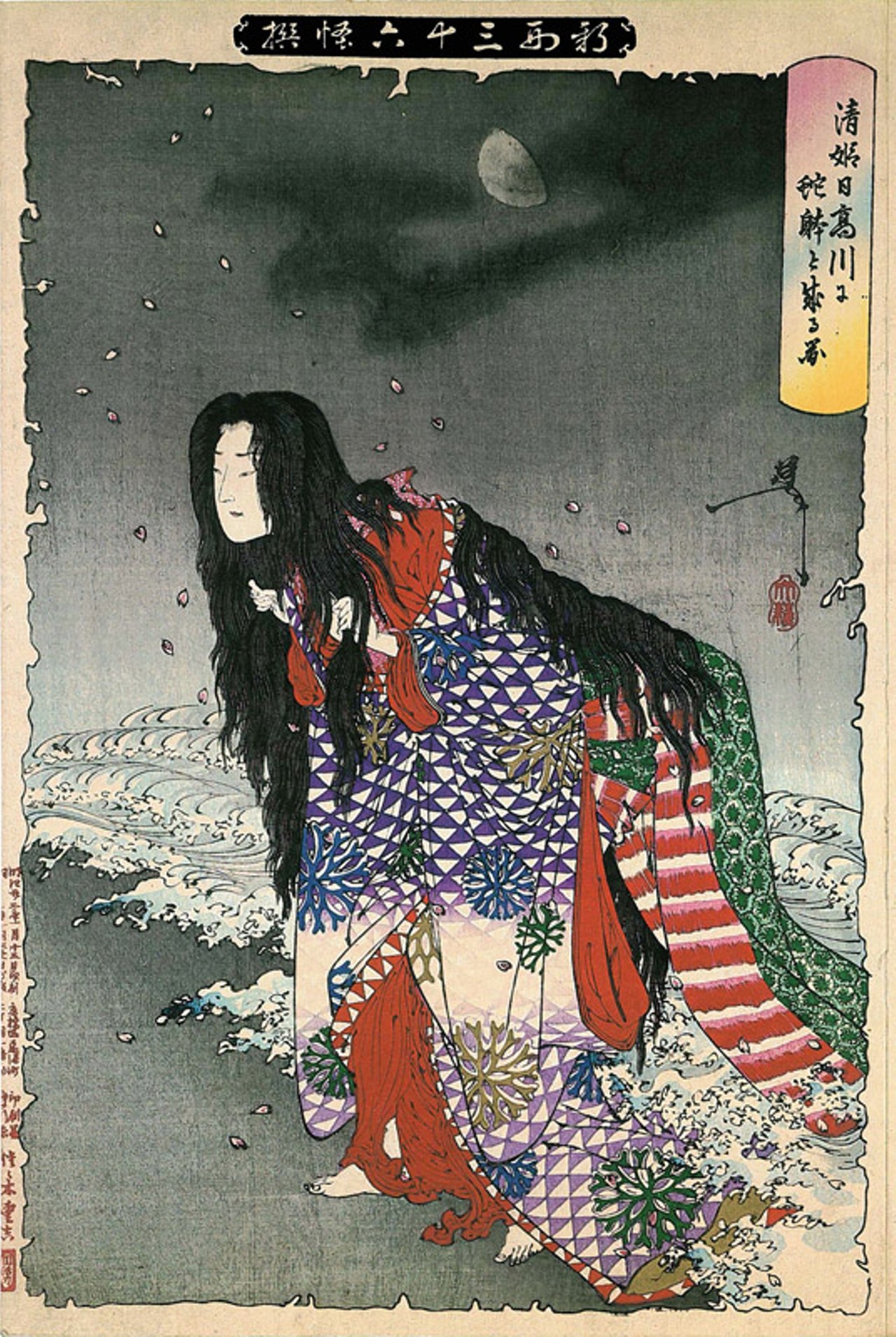Tsukioka Yoshitoshi is widely recognized as the last great master of the ukiyo-e genre of woodblock printing and painting. He is also regarded as one of the form's greatest innovators. His career spanned two eras—the last years of Edo period Japan and the first years of modern Japan following the Meiji Restoration. Like many Japanese, Yoshitoshi was interested in new things from the rest of the world, but over time he became increasingly concerned with the loss of many aspects of traditional Japanese culture, among them traditional woodblock printing.
By the end of his career, Yoshitoshi was in an almost single-handed struggle against time and technology. As he worked on in the old manner, Japan was adopting Western mass reproduction methods like photography and lithography. Nonetheless, in a Japan that was turning away from its own past, he almost singlehandedly managed to push the traditional Japanese woodblock print to a new level before it effectively died with him.
Today's print belonged to the A New Selection of Eastern Brocade Pictures series, created when the artist was at the peak of his career. During this time, he was also working on his acclaimed One Hundred Aspects of the Moon and another series of vertical diptychs that are today considered highlights of the artist's career. A New Selection of Eastern Brocade Pictures was extremely popular; some images were reprinted until the blocks were extremely worn.
The subject matter of the set is mostly derived from classical Japanese historical or mythical stories, sometimes in versions known in kabuki theatre dramatizations. Here we see evil Omatsu or demon Omatsu, a female bandit who appears in several kabuki plays. Her story seems to be based on facts; she is always represented as a vile woman, however, perhaps too free and dangerous for the rigid society of the Edo period. It is said that she killed her husband, a blind samurai, and then started to live as an outlaw.
P.S. Yoshitoshi was a master of Muzan-e, the "bloody prints" with scenes like from horror movies. If you are not scared, check them here! :-D


 Tsukioka Yoshitoshi
Tsukioka Yoshitoshi